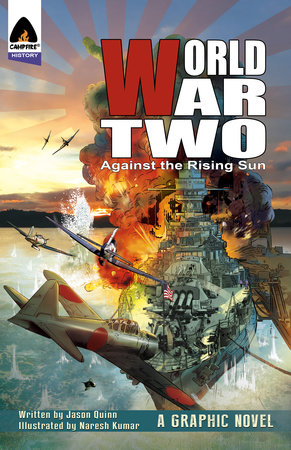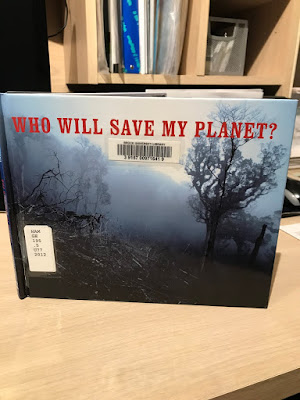Oral Communication Blog
How to enhance a student’s oral
communication skills
1. Podcasts, Listen and record podcasts
2. Encourage conversation (debates)
3. Provide strategies to enhance the confidence level for speaking
 It is quite obvious that oral
communication skills are a fundamental aspect of the development of both
thinking and learning. Believe me, when I say that it is the GLUE that puts all
components of a language together. Having said this it allows the opportunity
for individuals to express their emotions, ideas, and feelings.
It is quite obvious that oral
communication skills are a fundamental aspect of the development of both
thinking and learning. Believe me, when I say that it is the GLUE that puts all
components of a language together. Having said this it allows the opportunity
for individuals to express their emotions, ideas, and feelings.
It gives people
the ability to empower, inspire and motivate those who listen. Finally, I
believe it is used to share knowledge/traditions and lastly, build towards strong self-esteem. Growing up I struggled with the oral communication strand.
I was a very shy and quiet student up until grade 6.
In the sixth grade I participated in public speaking and doing so I placed silver out of all Hamilton Wentworth Catholic District School Board students. It enhanced my presentation skills to sound clear, concise, informative and a strong tone. Therefore, this weeks blog post will outline three resources educators can use to enhance a student’s oral communication skills.
In the sixth grade I participated in public speaking and doing so I placed silver out of all Hamilton Wentworth Catholic District School Board students. It enhanced my presentation skills to sound clear, concise, informative and a strong tone. Therefore, this weeks blog post will outline three resources educators can use to enhance a student’s oral communication skills.
Podcasts (Spreaker)
It is hard to deny that in the last
few years, creating podcasts has become a very popular communication method for
several things. From news headlines to the weather, you can find a podcast for
pretty much anything! I like to think of it as a portable radio that is
customized to your own individual taste.
Essentially, a podcast is an audio
file that is, for the most part, informative and can be downloaded and played
anywhere and anytime. Podcasts can be used to provide information in a fun and
entertaining way, increasing student engagement. It has an impact on the extent of student learning in different subject areas. Finally, students have the ability
to create their own podcasts for which they are able to share their ideas and
creations with their classmates.
I believe one of the best ways to use
podcasting especially within the classroom, is through student creation. Train
your students on how to create a podcast and watch the magic happen. One resource
that allows students to create their own podcast is an app called Spreaker.
 This is linked to the Ontario
Curriculum document (SE 1.1 Purpose) as students must identify the purpose
behind recording their podcast. Students must all demonstrate an understanding
of the concepts they are recording (SE 1.4 Demonstrating Understanding).
Finally, they will learn to enhance their vocal skills and strategies making
their podcast clear and concise (SE 2.5 Vocal Skills and Strategies).
This is linked to the Ontario
Curriculum document (SE 1.1 Purpose) as students must identify the purpose
behind recording their podcast. Students must all demonstrate an understanding
of the concepts they are recording (SE 1.4 Demonstrating Understanding).
Finally, they will learn to enhance their vocal skills and strategies making
their podcast clear and concise (SE 2.5 Vocal Skills and Strategies).
Using this app, educators are able to
assign students to create their own podcasts that demonstrate their learning of
a particular concept or concepts. Their podcast should then be available for
other students to download, allowing the students to put their teacher hats
on!!!
This evidently proves that podcasts
are a useful tool for the growth of oral communication skills for the students.
Encourage Conversation (Debates)
I believe incorporating debates in
your lesson plans are essential for developing oral communication skills for students.
Briefly, a debate can be described as a process involving formal discussion on
a particular subject. Within a debate, opposing arguments are put forward to
argue for opposing viewpoints from the other opposing side. The topic of debate
will depend upon the age of your students. In order to really grab the attention of your students, you really need to pick an interesting topic. Some
topics that are sure to grab your students attention:
·
School uniforms should be required
I believe this video “How to run a debate” by Groobles Media is perfect to assist educators in hosting debates within
their classroom. This video is great!
It provides several strategies for your students to follow such as what is needed before you start a debate (two opposing sides etc.) and when speakers argue their point, they need to speak loud and with clarity.
It provides several strategies for your students to follow such as what is needed before you start a debate (two opposing sides etc.) and when speakers argue their point, they need to speak loud and with clarity.
For example, in class, we had a debate on what was better Smarties or Coffee Crisp.
My team had 12 members which meant 12 different rebuttals. Overall, the debate
went really well! (I think Coffee Crisp side won!).
This
can relate to the Ontario Curriculum document (SE 2.1 Purpose) as students are
able to identify a range of purposes for speaking in a variety of situations.
For example, to support the resolution in a debate. It can also relate to (SE
1.7 Analysing Texts), here students will be able to analyze a variety of oral
texts and identify the strategies used to persuade their argument for the
debate. Finally, this can relate to (SE 2.6 Non-Verbal Cues) as students are
able to use gestures and increased volume to help get their point across.
It
clearly shows that using debates in the classroom provides students the
opportunity to explore real-world topics and issues. Debates also engage
students through self-reflection and encourage them to learn from their peers.
Finally, debates prepare students to be more comfortable engaging in any type
of dialogue related to their beliefs as well as their academics.
Provide Strategies to Enhance Confidence Levels when Presenting
Provide Strategies to Enhance Confidence Levels when Presenting
It can be difficult to put ourselves in our student's shoes when it comes to fear of presenting. I believe the fear of public speaking is one of the most common phobias, especially that many of our students feel when teachers ask them to present something or speak in front of the class. I can relate to this because I still often feel nervous to speak in front of a large crowd!
One a resource that can help strengthen the confidence levels of your students is
from a video I discovered on YouTube called
 “7 Ways to Teach Public Speaking to kids.”
“7 Ways to Teach Public Speaking to kids.”This video recommends seven strategies for teachers and even parents/guardians to follow. I will not go through all seven, but I will go over two that I found to be the most beneficial taken from the video.
Give
sufficient practice time
· The most common thing that students said improved
their confidence was having more time to practice.
·
Students will feel really confident if they have
time to rehearse, go over pronunciations of certain words, and to remember to
not forget anything out.
Create a positive Atmosphere
·
Creating an atmosphere that is accepting,
supportive, and respectful is one of the most important aspects of building
confidence in communication skills.
·
Emphasize that everyone in the classroom is
there to learn and engage. If by chance a student makes a mistake presenting,
as an educator, you must reinforce that making a mistake is totally normal!
This can relate to the Ontario Curriculum
document (SE 2.5 Vocal Skills and Strategies) as students are able to have the
confidence project their voice when presenting. I can also relate to (SE 1.9
Presentation Strategies) as students will have the confidence to present in a
wide variety of ways such as vocal effects and facial expressions. When
students obtain the confidence needed, they will realize that presentations are
simply an opportunity to showcase their hard work and show off their knowledge
and passions
:max_bytes(150000):strip_icc()/GettyImages-1144822648-e7617ee8970d4f058b2506784927713a.jpg)






